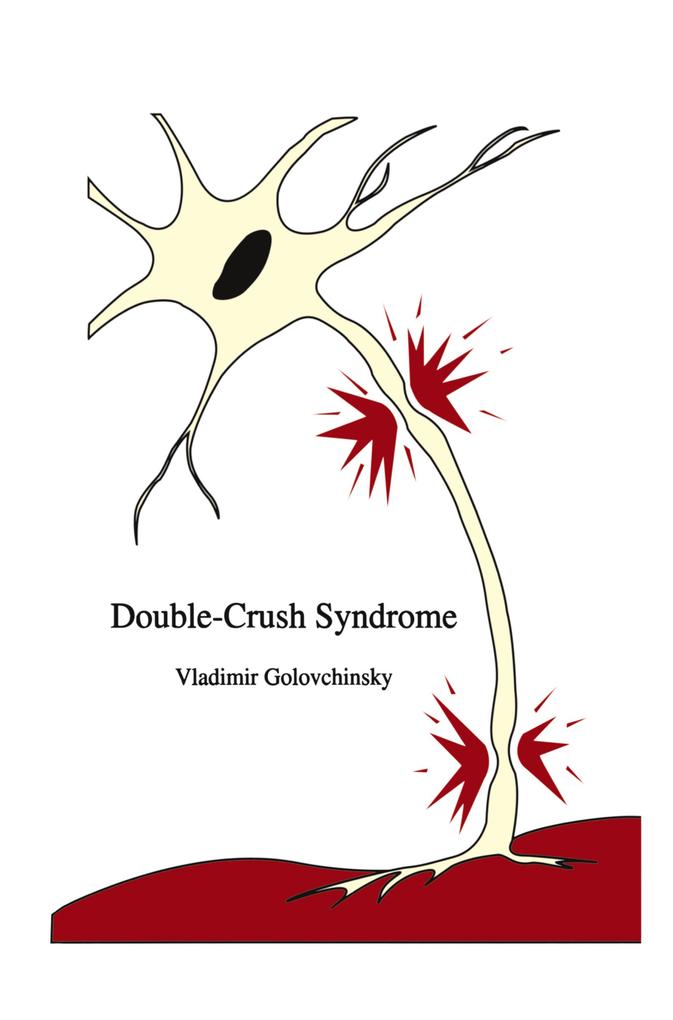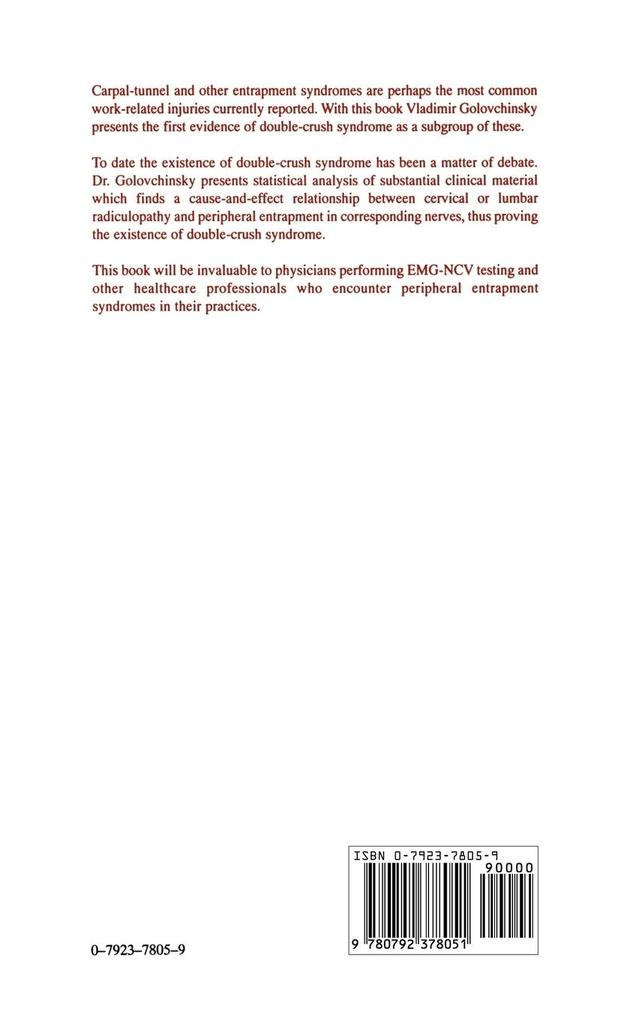
Zustellung: Do, 17.07. - Mo, 21.07.
Versand in 7 Tagen
VersandkostenfreiBestellen & in Filiale abholen:
Carpal-tunnel and other entrapment syndromes are perhaps the most common work-related injuries currently reported. With this book, Vladimir Golovchinsky presents the first evidence of double-crush syndrome as a subgroup of these.
To date the existence of double-crush syndrome has been a matter of debate. Dr. Golovchinsky presents a statistical analysis of substantial clinical material, which finds a cause-and-effect relationship between cervical or lumbar radiculopathy and peripheral entrapment in corresponding nerves, thus proving the existence of double-crush syndrome.
This book will be invaluable to physicians performing EMG-NCV testing and to other healthcare professionals who encounter peripheral entrapment syndromes in their practices.
To date the existence of double-crush syndrome has been a matter of debate. Dr. Golovchinsky presents a statistical analysis of substantial clinical material, which finds a cause-and-effect relationship between cervical or lumbar radiculopathy and peripheral entrapment in corresponding nerves, thus proving the existence of double-crush syndrome.
This book will be invaluable to physicians performing EMG-NCV testing and to other healthcare professionals who encounter peripheral entrapment syndromes in their practices.
Inhaltsverzeichnis
1 Peripheral entrapment syndromes. A review of literature. - 1. 1 Carpal tunnel syndrome. - 1. 2 Cubital tunnel syndrome. - 1. 3 Ulnar neuropathies at the wrist and hand. - 1. 4 Tarsal tunnel syndrome. - 1. 5 Anterior tarsal tunnel syndrome. - 2 Double-crush syndrome. Does it exist? . - Proximal nerve damage and peripheral entrapment. - Diffuse nerve damage and peripheral entrapment. - Literature. - 3 Double-crush syndrome in upper limbs. A statistical approach. - Statistical analysis. - Results. - Interpretation. - Literature. - 4 Double-crush syndrome in lower limbs. A statistical approach. - Statistical analysis. - Results. - Interpretation. - Literature. - 5 Retrograde diffuse mononeuropathy secondary to peripheral entrapment. Reversed double-crush syndrome. - Statistical analysis. - Interpretation. - Literature. - 6 Discussion and clinical implementations. - Impairment of axonal transport. - Impairment of circulation. - Endoneural edema. - Underlying peripheral neuropathy. - Impairment of neural excursion and elasticity and mechanical deformation of nerve fibers. - Underlying connective tissue abnormalities. - Conclusion. - Literature.
Produktdetails
Erscheinungsdatum
30. April 2000
Sprache
englisch
Auflage
2000
Seitenanzahl
184
Autor/Autorin
Vladimir Golovchinsky
Verlag/Hersteller
Produktart
gebunden
Abbildungen
XI, 169 p.
Gewicht
446 g
Größe (L/B/H)
241/160/16 mm
ISBN
9780792378051
Entdecken Sie mehr
Bewertungen
0 Bewertungen
Es wurden noch keine Bewertungen abgegeben. Schreiben Sie die erste Bewertung zu "Double-Crush Syndrome" und helfen Sie damit anderen bei der Kaufentscheidung.









